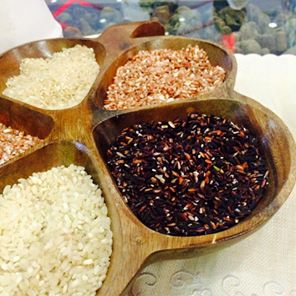The way to the every man’s heart is through the pleasure of his stomach. And just this weekend, our native and indigenous fruits, flowers and vegetables, bearing with it a distinct Filipino tradition, won quite a number of hearts.
Recovering Tradition
Our deepest sense of identity lies in our food. A fistful of sampaloc in our soup, a nip of sili in patis, even a whiff of vinegar rising from a simmering Adobo, these carry snippets of memory, a time, and a place. Except that we have forgotten a handful of our flavors, have chosen to import grapes and Gruyere, or now fancy that a banquet is only a banquet when there’s a carving of imported roast beef. And so we pressure our farmers to grow temperate plum tomatoes or chunky lettuce heads, and then snub the lean and mean Southern Yellow cow. Our Ligaw cherry tomatoes seem puny and unworthy of a salad and our cows? Well, “tough” luck.
But this weekend offered hope in a platter. Suddenly, the chefs only fancied local produce. Suddenly, consumers were getting all worked up on the Pancit Pancitan growing in their garden. And suddenly, the small family farmer, the piaya artisan, even the Manong who traditionally concocts sinamak, took center stage. It was an entire weekend of haute cuisine and there we were, exchanging stories about seed and grain, and the food gardens and kitchens of our grandmothers.
More than the food porn, the moving feasts, and the parade of ogle-worthy chefs, Madrid Fusion Manila opened our eyes (and our bellies) to new gastronomy: one that was based on biodiversity; on reviving local tradition; and on rediscovering our native, indigenous and once-loved fruits, flowers and vegetables.
National Treasures
The spotlight was on the unsung Sua and the stony Tabon Tabon, as chefs pinched and smelled, grated and squeezed, knocked and cracked open the secret ingredients for Mindanao’s killer kinilaw.
And then there was our flamboyant grain. Foreigners and Filipinos were gushing over the Igorot black rice from the uplands, where they still flood 2000-year old rice paddies and thresh the grain with their hands. The colors were ravishing: dark and multi-faceted. The flavor was nutty. I had to write “Precious sample. Please do not steal,” as these grains were only available six months in a year. Though once I gave in and went home to feast on Pata Negra. as I finally bartered our precious grains for the Espanols’ precious tapa, 2 for 2.
And they were wild about our wild flowers too: hibiscus, pigeon pea (kadios), the Butterfly Blue pea, and even the wild berries we had just foraged off our garden. There was a quite a buzz about our “Buzz Buttons,” and I’d notice one guy bring back one, two, and a whole enchilada to sample the buzzing of the buttons on their tongues.
Then there’s the Adlai, the chefs’ manna from heaven and I believe an answer to our food sovereignty  and security. This ancient grain has been cultivated for centuries by the indigenous people of Mindanao- the Talaandigs and the Bagobos. Aptly named as Job’s Tears, the grains are tear-shaped, with a texture similar to risotto or quinoa. I munched my way through lunch with Adlai croquettes and had a bite too many of the Black Heritage pork belly over Adlai.
and security. This ancient grain has been cultivated for centuries by the indigenous people of Mindanao- the Talaandigs and the Bagobos. Aptly named as Job’s Tears, the grains are tear-shaped, with a texture similar to risotto or quinoa. I munched my way through lunch with Adlai croquettes and had a bite too many of the Black Heritage pork belly over Adlai.
Shorter Chain a.k.a. Farm to Fork
Today’s cliché in the culinary world is “Farm to Table” or “Farm to Fork.” I often gripe about the injustice or the charade, because often it still is the trader that gets the food to everyone’s table. But this gastronomy weekend gives us grounds for hope. Hope for local farmers and small family farms: for those without the trucks and the forklifts; for those who choose to grow food enough for only a few baskets; for those who harvest and plant their own seeds; for those who choose to work the land as their ancestors; and for those who take pride and joy in keeping the earth. Perhaps now or a few years hence, they won’t have to sell short their treasures to the trader at the farm gate. They won’t have to trade their bounty for peanuts. And because chefs and consumers now have a heart for the unsung Sua, the lean Southern Yellow cow, the tear-shaped Adlai, and the multicoloured rice, our farmers won’t give up tradition, and a bounty of national treasures can stay at the table.







